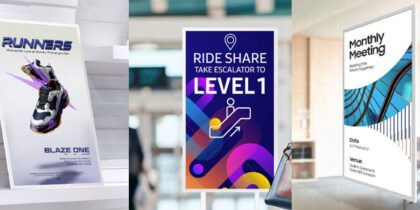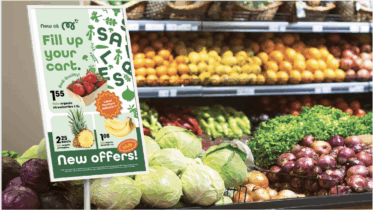While brands and retailers agree that an omnichannel strategy is critical for success, a recent Marketing Land article reports that their strategies for achieving this are often quite different. While in-store digital technologies can boost sales, there’s disagreement over which technologies are the most critical for success: According to Marketing Land, a survey from Netsertive and the CMO Council revealed that 6 out of 10 senior marketing leaders believe digital advertising is the technology most critical to their omnichannel strategy, while 56 percent cited corporate websites, and slightly fewer (54.4 percent) cited mobile. However, in order for brands and retailers to have a truly successful omnichannel strategy this holiday season, they must utilize all of these digital technologies cohesively.
Complementary Technologies Boost Sales
According to Boston Consulting Group, retailers with digital technologies in their brick-and-mortar stores have shown stronger growth than retailers that have yet to embrace tablets, advanced point-of-sale (POS), digital signage and other technologies in their physical locations.
Tablets can provide sales associates with up-to-date information about product specs, pricing, and availability — information the customer is most likely to need — while ancillary product information provides associates with an upsell opportunity — a way to help consumers buy additional products that augment their initial purchase. Some stores even equip their associates with wearable devices to help with merchandising and management on the sales floor. Mobile POS (mPOS) solutions enable retail associates to process sales from customers immediately when they’re at the point of decision, reducing the “second thoughts” that result in non-purchases and eliminating the long checkout lines on Black Friday and the weekends between now and Christmas. These technologies also allow companies to quickly measure sales, inventory and performance of different promotions, enabling retailers and brands to align and swiftly alter strategies as necessary, such as reducing prices on slow-moving products.
Millennials are changing the way we shop.
Get the eBook to learn how new retail solutions can meet the needs of this important demographic. Download Now
Sometimes shoppers spot an item in the store and decide to buy it later via a retailer’s website, so in-store technologies must also be able to capture important customer information, such as names and addresses, that can pre-populate electronic ordering to make the online sale as convenient as possible.
In order for retailers to deploy a more comprehensive omnichannel strategy, Babson College recommends they use a host of digital technologies that work together — including those mentioned above, as well as smart mirrors, digital signage and virtual reality — to boost sales. These in-store technologies are built on open platforms, enabling retailers to integrate them quickly into their existing technology infrastructures so that they can enhance their omnichannel strategies.
In order to remain competitive in an increasingly digital landscape, many brick-and-mortar stores are turning toward virtual reality.









